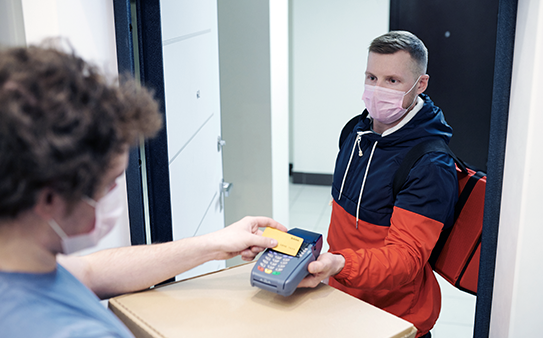Mark Ripplinger, President and CEO, Everlink Payment Services
Consumer payment methods have continued to evolve globally, as emerging new technologies open up a variety of options to consumers. Payment method choices are traditionally determined by consumer habits, demographics, economy, regulatory governance and even culture– all play a role in the selection of methods by consumers. However, there is no disputing that the fastest growing payment acceptance method in the last few years has been the use of digital and mobile wallets, as they continue to transform payments at the point of sale.
Whether it’s retailer-specific apps or wallets issued by financial institutions, smartphone manufacturers and technology platforms, digital and mobile wallets continue to provide consumers with a convenient and secure payment method. As the smartphone becomes consumers’ “new wallet,” many are choosing to put their “preferred cards” on their phone instead of carrying a physical card. The adoption of using a smartphone for payment of goods and services via Samsung Pay, Google Pay and Apple Pay has taken the payment industry by storm. According to the largest acquirer in the world, FIS Global, this behaviour drove significant changes in global point of sale payment adoption: from 16% in 2018 to 22% in 2019.
In Canada, the cannibalization of traditional payment methods continues as cash and cheques steadily give way to payment cards and mobile wallets. Cash transactions, in particular, have flatlined in recent years, falling 5.1% from 5.59 billion transactions in 2014 to 5.31 billion transactions in 2019. It’s also interesting to note that ATM usage, in parallel, has also steadily diminished in terms of cash withdrawals, as both the volume of withdrawal transactions and the value of the withdrawals themselves have declined. According to Technology Strategies International (TSI), the number of cash withdrawal transactions is expected to fall from 600 million transactions in 2019 to 528 million transactions in 2023, a reduction of 12% in just four years. Moreover, the value of cash withdrawn is projected to fall from $85.1 billion to $83.4 billion in that same time period, reinforcing the view that the use of cash continues to decline, unabated.
Conversely, payment cards in Canada are projected to be on the rise, whether it’s at the point of sale terminal or online purchases. According to TSI, credit cards will lead the way, expected to grow 39.5%, from 6.7 billion transactions in 2019 to 9.35 billion transactions in 2023, with the value of purchases also expected to rise 30.4%, from $635 billion to $828.5 billion in the same time period. Debit cards are projected to modestly rise 20.6%, from 6.3 billion in 2019 to 7.6 billion transactions in 2023, while the value is expected to rise 18.2%, from $263 billion to $310.8 billion in the same time period.
Finally, Mobile payments have grown at a torrid pace, with the value of a mobile payment transaction growing by nearly 59% between 2013 and 2018; the volume was even more impressive with a staggering growth of 513%, rising from 56.2 million transactions in 2013 to 288.6 million transactions in 2018. The total value of mobile payments in Canada for both in-store and online purchases reached $48 billion in 2019 and is expected to nearly double to $91 billion by 2023. The adoption of using a smartphone as the “wallet of choice” has been embraced by Canadians even faster than most industry insiders projected.
These are fascinating statistics, but it’s noteworthy to mention that these projections were forecast well before the onset of the COVID-19 pandemic. By mid-March 2020, everything changed: all levels of government across Canada began mandating public social distancing and isolation measures, while implementing essential services policies that forced many retail store and business closures.
The impact on the economy and point of sale volumes is still being felt today, some 4+ months later, as provincial and municipal governments gradually phase in the re-opening of retail stores, restaurants and businesses. COVID-19 has dramatically changed the behaviour of consumers both in Canada and globally over the last few months, and along with it the payments landscape. One observation, in particular, is the reluctance of both retailer and consumer to handle cash, preferring either debit or credit card transactions instead, further exacerbating the clear downward trend related to use of cash which existed pre-COVID-19. We see another illustration that the use of cash is an increasingly less desirable payment method in the spin-off effect related to ATM usage: cash withdrawals have dropped off by as much as 30% since the beginning of the pandemic, perhaps speaking more to the decreasing desire to “handle cash” than to the desire to “use cash” as a payment method.
Another observation is the dramatic change in retail cashier configuration. Grocery stores, big box stores, quick-service restaurants and other retailers have all implemented measures such as plexiglass shields between the consumer and cashiers as well as guards and coverings on point-of-sale terminals designed to protect cashiers and consumers alike. Not only have these preventative initiatives been promoted by retailers and government regulators, but they’ve been desired and embraced by Canadian consumers during this pandemic as well. The “COVID-19 reality” has contributed to the promotion of, and rapid increase in, both contactless and mobile payments, as consumers are wary of making contact with any surface, let alone a “high-touch” surface such as a point of sale payment terminal. Interac Flash transactions and Interac mobile debit, for example, have risen by 25% and 30% respectively since the beginning of the pandemic, according to a leading Canadian Interac payments processor.
Furthermore, outright store closures combined with retailer-implemented measures to limit the number of shoppers in a store at any given time, triggering long line ups and wait times, have pushed consumers to online shopping for a faster and, in most cases, more convenient buying experience, one which eliminates any risk of unnecessary exposure to the virus. This consumer behaviour has rapidly driven eCommerce transactions upwards by 70% in the last four months, as observed by a leading Canadian payments processor.
As governments gradually re-open businesses in various stages with strict social distancing measures in place, the question remains: is the impact of COVID-19 a temporary effect on consumer behaviour and payment methods, or is it the accelerator that permanently bolsters digital and mobile payments? With the rise of mobile wallets and eCommerce before the pandemic and a clear trend pointing to declining use of cash, the effective demise of cash and cheques could be closer on the horizon than expected. Certainly, in the months ahead, and with the potential threat of a 2nd pandemic wave this fall, there is ample evidence to support the belief that these consumer behaviours and payment trends will continue in the short term and are very likely to continue into 2021.
As we contemplate a post-pandemic “new normal,” it is certain to include some permanent changes in consumer behaviour, including new takes on eCommerce, online shopping, contactless and mobile payments, digital wallets, use of cash, cheques, etc. It is fair to say that COVID-19 has been a catalyst to accelerate trends which historical evidence would suggest were inevitable, but would likely have been more gradual. Instead, we have seen acceptance, usage and demand for all things digital and online increase dramatically- most, if not all, signalling a permanent shift in how we will shop and pay for our purchases.
Embedded in the above-noted consumer behavioural changes and shopping and payment trends lies an opportunity for Canadian FinTechs, particularly PayTech companies. Forward-thinking and innovative PayTechs have a unique opportunity to take advantage of the post-pandemic reality, embrace the shifts and resets and drive new opportunities and new payment technologies in the coming



